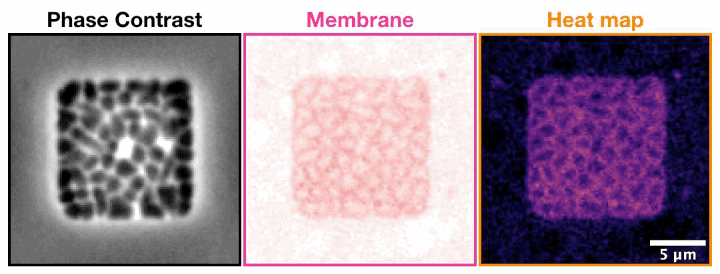OVERVIEW
Cellular Organization and Behavior in the Archaea domain of life
How the evolution of molecular systems shaped the function and behavior of cells and created the life diversity observed today is still an exciting puzzle. From the apparent simplicity of bacterial cells to the multi-compartmentalized eukaryotes, all these organisms are capable of employing similar molecular components by different mechanisms through different physical and temporal scales to propagate and survive. To understand how such complexity emerged and the mechanisms in which is regulated, we aim to study the cell biology of Archaea.

Low-resolution tree of life representing the distribution and divergence between Bacteria, Eukaryotes, and Archaea. The different archaeal superphyla are represented in green. Illustration adapted from Eme et al., 2017
Archaea (from Greek arkhaios, ‘primitive’) are unique microorganisms that equipped with genes previously thought to be present exclusive of bacteria or eukaryotes, summoning an exciting hybrid of molecular components that not only predated eukaryotes but might have played an essential role in their emergence.
The billions of years separating Bacteria and Eukaryotes qualify archaeal cell biology as one of the most promising fields for unseen biological phenomena.
To break new ground, the Bisson Lab is pioneering in a variety of orthogonal approaches: 1) plasmid-free genetic engineering and genetic screens to identify new cellular components; 2) advanced live-cell microscopy and computational analysis to observe and quantitate the in vivo dynamics of molecular components; 3) in vitro biochemical reconstitutions to elucidate their kinetic parameters; 4) Microfabrication and cultivation of complex microbial populations within microfluidic environments.
In our group, intellectual independence and freedom to pursue one's curiosity are fundamental assets. That means that we welcome ideas for new topics that are not currently ongoing in the lab. However, few questions permeate our projects and guide our research:
-
What are the mechanisms that control archaeal cell shape and how to reproduce such diversity in vitro and other organisms?

Shape diversity across different archaea. H. walsbyi image kindly provided by Mike Dyall-Smith (U. of Melbourne). Images from third column were adapted from XXX (top), Conklin et al., 2006 (center) and Imachi et al., 2019 (bottom). Otherwise stated, scale bars represents 2 μm.
2. How do archaea regulate cell division and pace their cell cycle?

Time lapse of haloarchaeal cytoskeleton dynamics during cell division in Haloarchaea. Movies show unusual “slice-off” cytokinesis (left), directional motion of tubulin-like filaments (middle) and their single-molecule dynamics (right).
3. How do archaea sense the physical and chemical environment around them?

Archaeal cells trapped inside microfabricated chambers “fighting back” compression by change in membrane fluidity.